Moderate overlap front: original test
Rating applies to 2009-15 models
Tested vehicle: 2009 Toyota Venza 4-door 4wd
The Toyota Venza was introduced in the 2009 model year.
| Evaluation criteria | Rating |
|---|---|
| Overall evaluation | |
| Structure and safety cage | |
| Driver injury measures | |
| Head/neck | |
| Chest | |
| Leg/foot, left | |
| Leg/foot, right | |
| Driver restraints and dummy kinematics | |
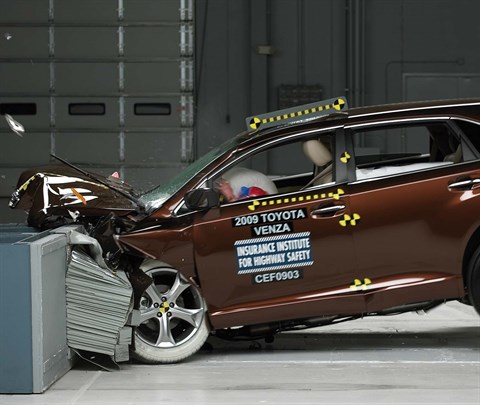
Action shot taken during the frontal offset crash test.
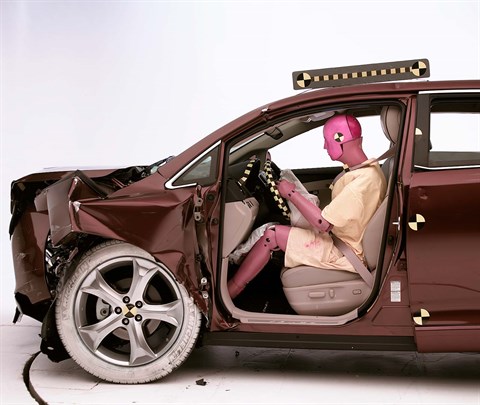
The dummy's position in relation to the steering wheel and instrument panel after the crash test indicates that the driver's survival space was maintained very well.
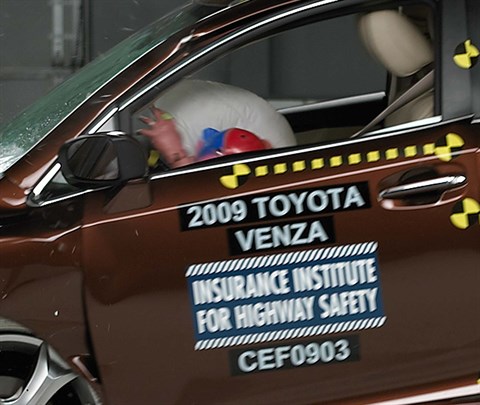
A high head acceleration occurred when the dummy's head hit the steering wheel through the airbag.

Intrusion into the driver's space was minimal, and all leg and foot injury measures were low.
Side: original test
Rating applies to 2009-12 models
Tested vehicle: 2009 Toyota Venza 4-door 4wd with standard front and rear head curtain airbags and standard front seat-mounted torso airbags
The Toyota Venza was introduced in the 2009 model year.
| Evaluation criteria | Rating |
|---|---|
| Overall evaluation | |
| Structure and safety cage | |
| Driver injury measures | |
| Head/neck | |
| Torso | |
| Pelvis/leg | |
| Driver head protection | |
| Rear passenger injury measures | |
| Head/neck | |
| Torso | |
| Pelvis/leg | |
| Rear passenger head protection | |
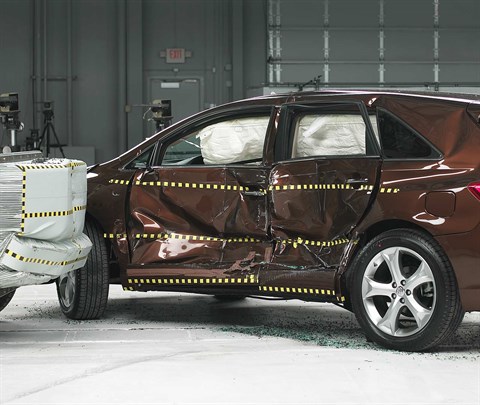
View of the vehicle and barrier just after the crash test.
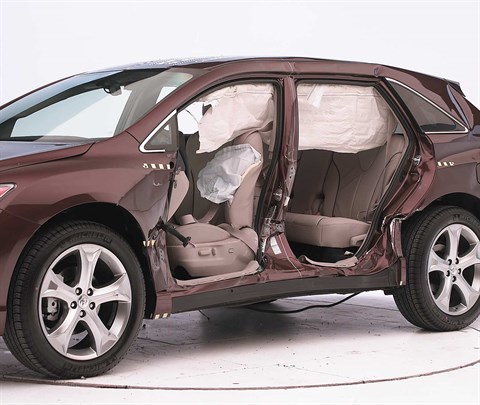
View of the vehicle after the crash with doors removed, showing the side airbags and damage to the occupant compartment.
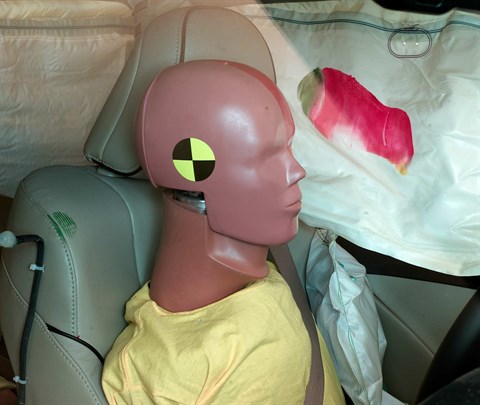
Smeared greasepaint shows where the driver dummy's head was protected from being hit by hard structures by the side curtain airbag.

Smeared greasepaint shows where the rear passenger dummy’s head was protected by the side airbag.
Roof strength
Rating applies to 2009-15 models
Tested vehicle: 2010 Toyota Venza 4-door 4wd
| Overall evaluation | |
|---|---|
| Curb weight | 4,037 lbs |
| Peak force | 18,977 lbs |
| Strength-to-weight ratio | 4.70 |
Head restraints & seats
Seat type: Power seats (AHR)
| Overall evaluation | |
|---|---|
| Dynamic rating | |
| Seat/head restraint geometry |
About the head restraint & seat test
Currently, IIHS tests apply only to front seats.
